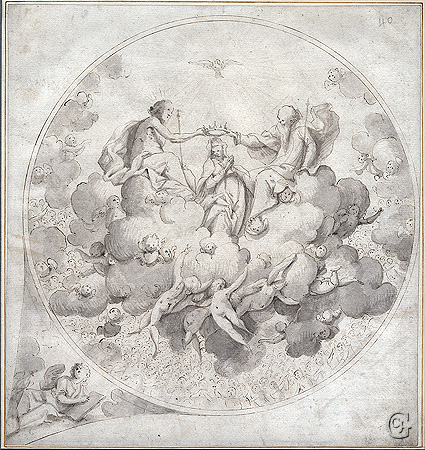Affordable Drawings
from the 16th through the 20th century
from the 16th through the 20th century
- Vasari, Seven Bishop Saints
- Passarotti, Male Nude Study
- Castello, A Decapitation
- Wildens, A Hilly Path
- Florentine School , Floral Ornament
- Procaccini, Head of a Soldier
- French School, Head of Hercules
- Vlieger , Fishermen
- Gargiulo , Elevation of Saints
- Roos, Cattle and Sheep
- Cabel, River Landscape
- d'Onofri , Trees in a Landscape
- German School, The Coronation of the Virgin
- Heemskerck, Peasants Drinking
- Piola, St. Raymond
- Moucheron , Classical Figures in a Grove of Trees
- Chaufourrier, Solfatara
- Lantara , Storm over a Village
- Volaire , Neapolitan Boatman
- Monogramist Vh , Woodland Grove
- Bolognese School, Seated Warrior
- Galliari , Stage Set: Courtyard of a Farm
- Duclaux , Plants Growing in a Field
- Cruikshank , Standing Male
- Altmann , Wine Taster
- Decamps, Trees at the Villa
- Nanteuil , Two Figures
- Bodmer, Partridges
- Harpignies , Trees
- Marsaud, Harlequin
- Dehodencq, Three Sketches
- Delauney, Fruit Tree with Birds
- Dansaert , Brawl in a Tavern
- Chapu, Studies for ’’Une Source’’
- Vannutelli, Two Women Seated in a Church
- Lepère, Studies of Ladies Shopping
- Béjot, Pont de l'Alma
- Henricus, Japonisme
- Vuillard, Mme. Vuillard, Sewing at Her Window
- Couturier, Carnival Scene at Night
- Brockhurst, Chinese Group
- Stankavich, On the Frontier
| 13. South German School Late 17th Century The Coronation of the Virgin, Design for a Cupola Ceiling |
(click on image to print)

The Coronation of the Virgin, Design for a Cupola Ceiling
Brown ink, and grey wash, 270 x 254 mm.
Fine, finished, inscribed circular design showing the Virgin in the clouds, crowned by God the Father and Christ, the holy spirit above, the clouds supported by angels, and hundreds of other heads and figures underneath and around.. One triangular support is drawn at the lower left with an angelic figure writing on a tablet. The drawing was formerly catalogued as Italian, late sixteenth century, but appears to be more likely Germanic and somewhat later, more specifically, South German and of the seventeenth century. It relates, on the early side, to works by Johann Rottenhammer (1564-1625) (see Kaufmann Drawings from the Holy Roman Empire, No. 30) who also did a famous altarpiece of the subject, unrelated to this composition, and, on the late side, to a sheet by the sculptor Franz Ignaz Günther (1725-1785) (see Kaufmann Central European Drawings, No. 52), whose figural drawing is similar but the overall style clearly later. This sheet must fall somewhere between the two, the artist as yet unidentified. A tour of south German and Austrian churches might provide an answer.
![]()